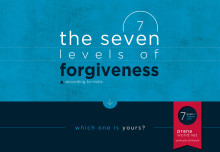
There are Many Paths
In traditional Indian literature, different types of Yoga have been introduced, all of which believed to fasten the evolution of the soul, which involves the union of the incarnated soul with the higher soul as described in the Introduction to Yoga.
According to Swami Vivekananda, “the fire of Yoga burns the cage of sin that is around a man. Knowledge becomes purified and Nirvana is directly obtained. From Yoga comes knowledge; knowledge again helps the Yogi. He who combines in himself both Yoga and knowledge, with him the Lord is pleased.” (Swami Vivekananda)
It is believed that Yoga was first appeared in the Katha Upanishad:
“When the five organs of perception become still, together with the mind, and the intellect ceases to be active: that is called the highest state. This firm holding back of the senses is what is known as Yoga.” (Katha Upanishad 2.3.10–11) While in Yoga Upanishads it is referred to, as a means of oneness with God.
“It has been said that from knowledge is attained the oneness (of the inner and outer Atmas), even as water (becomes one) with water. By travails in the persistent practice of the course of Yoga, these good results flow (and the yogin becomes a Jivanmukta). For the reason that by the practice of Yoga (the Yogin) becomes divorced from all suffering and pain, he should always practice Yogic meditation and acquire wisdom and, simultaneously with the dawning of wisdom, become merged with the Brahman.” (The Yoga Upanishads, 57-59)
In the Yoga Upanishads, Pratyahara (subjugation of the senses), Dhyana (contemplation), Pranayama (control of breath), Dharana (concentration), Tarka and Samadhi are said to be the six parts of Yoga.
In Bhagavad Gita, Yoga has been described as the science of uniting the Individual Consciousness with the Ultimate Consciousness; and this process can be accelerated using a number of methods and different types of Yoga including Bhakti Yoga, Jnana Yoga and Karma Yoga.
In other books and scriptures including Yoga Sutras of Patanjali, other types of Yoga have been introduced as well, such as Raja Yoga, Hatha Yoga and Kundalini Yoga.
Each yoga basically focuses on a set of practices, designed for a specific type of practitioners. The main four paths of Yoga in this way include Karma Yoga, Bhakti Yoga, Raja Yoga and Jnana Yoga. While Karma Yoga uses action and service, Bhakti Yoga focuses on love and devotion as means of attaining union. Raja Yoga is known as the yoga of concentration and Jnana Yoga is the yoga of knowledge.
Karma Yoga
Karma Yoga or the discipline of action, literally means “union through action.” It is basically a path that seeks union using selfless service and is often described as “perfection in action.”
Karma Yoga in this case involves thinking, willing and acting based on one’s duties free from self-centered desires and personal likes and dislikes; acting properly in the service of the Supreme God and the Guru, as if one is detached from the fruits of his actions.
“Karma Yoga is the selfless devotion of all inner as well as the outer activities as a Sacrifice to the Lord of all works, offered to the eternal as Master of all the soul’s energies and austerities.” (Bhagavad Gita)
According to Swami Sivananda, Karma Yoga is to “give your hands to work, and keep your mind fixed at the lotus feet of the Lord.”
“Therefore, without being attached to the fruits of activities, one should act as a matter of duty, for by working without attachment one attains the Supreme.” (Bhagavad Gita, 3.19)
Bhakti Yoga
Bhakti Yoga in general is the yoga of love and devotion. The Bhakti Yoga practitioner sees everything as a manifestation of God or the Supreme being. It is such love and devotion that the practitioner is constantly thinking of God or the spiritual teacher in the same way as a lover thinks of his beloved.
Chanting, praying or singing the praises of God constitutes a great portion of Bhakti Yoga practices.
Important issue in Bhakti Yoga is that there should be strong devotion or surrender towards the object of faith. Through constant meditation and contemplation, and because of a strong connection and love, gradually the practitioner looses self-identity and becomes one with the object of devotion, which is often God or the guru.
“Engage your mind always in thinking of Me, become My devotee, offer obeisance to Me and worship Me. Being completely absorbed in Me, surely you will come to Me.” (Bhagavad Gita, 9-34)
Raja Yoga
Raja Yoga literally is translated to “Royal Union,” and is among the main four paths of yoga. It offers a comprehensive method of controlling the mind through concentration and meditation. Raja Yoga is basically focused on the mind, its fluctuation and means of controlling or calming it.
“Every thought, feeling, perception, or memory you may have causes a modification, or ripple, in the mind. It distorts and colors the mental mirror. If you can restrain the mind from forming into modifications, there will be no distortion, and you will experience your true Self.” (Swami Satchidananda)
One of the techniques used in Raja Yoga practices is concentration on the area between the eyebrows and from there it begins to automatically lose all location and focus on the watching itself. Eventually, the meditator experiences only the consciousness of existence and achieves Self Realization.
“When the mind has been trained to remain fixed on a certain internal or external location, there comes to it the power of flowing in an unbroken current, as it were, towards that point. This state is called Dhyana. When one has so intensified the power of Dhyana as to be able to reject the external part of perception and remain meditating only on the internal part, the meaning, that state is called Samādhi.” (Swami Vivekananda)
Raja Yoga is also known as Ashtanga Yoga or the Eight Limbs of Raja Yoga where Patanjali explains the methods of controlling the body, energy, senses and the mind.
The Eight Limbs of Yoga include:
1. Yama or the five virtues: Ahimsa (non-violence), Satya (non-lying), Asteya (non-covetousness), Brahmacharya (non-sensuality), and Aparigraha (non-possessiveness).
2. Niyama or the five observances: Shaucha (purity), Santosha (contentment), Tapas (austerity), Svadhyaya (study of the Vedic scriptures to know about God and the soul), and Ishvara-Pranidhana (surrender to God).
3. Asana or Physical Exercises: in Patanjali’s Sutras, it refers to the seated position used for meditation.
4. Pranayama or Breathing Exercises: “Prana” means energy or life force and “ayama,” to restrain or stop. Also interpreted as control of the life force.
5. Pratyahara or Abstraction: Withdrawal of the sense organs from external objects.
6. Dharana or Concentration: Fixing the attention on a single object.
7. Dhyana or Awareness: Intense contemplation of the nature of the object of meditation.
8. Samadhi or Liberation: merging consciousness with the object of meditation.
Jnana Yoga
Jnana Yoga is often called the yoga of will and intellect and literally means “the path of knowledge.” In the Bhagvad Gita Krishna says that “Jnana consists of properly understanding kshetra (the field of activity, that is the body) and kshetra-jna (the knower of the body, that is the soul) (and the difference between these two).” (Bgahvad Gita 13.3) Jnana Yoga is “the process of converting the intellectual knowledge into practical wisdom.” (Paramhansa Swami Satyananda Saraswati) Jnana Yoga involves discernment, self-awareness, realizing the true nature and developing the intuitive wisdom. Shankaracharya introduces four means to liberation using Jnana Yoga as:
“1. Viveka – Discrimination: The ability to differentiate between what is real/eternal (Brahman) and what is unreal/temporal (everything else in the universe.)
2. Vairagya – Dispassion: After practice one should be able to detach himself from everything that is temporary.
3. Shad-sampat – The 6 Virtues: Sama-Tranquility (control of the mind), Dama (control of the senses), Uparati (cessation/renunciation of activities that are not duties), Titiksha (endurance), Shraddha (faith), Samadhana (perfect concentration).
4. Mumukshutva – Intensely focused longing for moksha, liberation from temporal entanglements that bind one to the cycle of death and rebirth.” (Shankaracharya)
Hatha Yoga
Hatha Yoga combines the elements of Patanjali Yoga sutras with physical postures and breathing exercises. It is basically the yoga of postures or asanas.
Hatha Yoga is one of the commonly practiced yogas that sometimes is simply referred to as Yoga. It is basically used to clean the energy body from the toxins and used up energies and increase the energy circulation in the body.
Hatha Yoga is literally composed of “ha” meaning “Prana” or “life force” and “tha” which refers to “Chitta” or the “mental force.” In this way the practices of Hatha Yoga aims at harmonizing and purifying the energy body and preparing the mind for more advanced meditations.
Hatha Yoga therefore is used by many spiritual practitioners and meditators as a preparation for the further advanced meditations. Once the body is cleansed from used up energies through physical and breathing exercises, it gets ready for meditation.
Paramhansa Swami Satyananda Saraswat describes Hatha Yoga as a composition of four parts:
“Yogasana or Yoga Positions
Six Shatkarmas or physical and mental detox techniques
Mudras and Bandhas or psycho-physiological energy release techniques
Pranayama or pranic breathing exercises.”
(Paramhansa Swami Satyananda Saraswat)
Kundalini Yoga
In Kundalini Yoga the aim is to activate the Kundalini energy that is located somewhere near the base of the spine to its highest degree. This yoga helps the Kundalini energy to awaken and arouse from the base of the spine up to the crown.
A snake or a serpent fire is often symbolizing the Kundalini energy, which is dormant and need to be activated to upgrade the human system and the brain.
It is believed that the energy of Kundalini upgrades the body and the brain cells to enable them to register the higher frequencies and vibrations. experienced in meditations. It is basically needed for further spiritual development.
Kundalini Yoga is often called “the yoga of awareness” by the practitioners.
Arhatic Yoga
Arhatic Yoga is another highly advanced technique for self-realization and spiritual development that is developed by Master Choa Kok Sui.
Arhatic Yoga is known as the synthesis of all yogas, since it has the essence of other yogas, specially designed for today’s lifestyle. The purpose of Arhatic Yoga is basically “to produce intelligent, compassionate, good hearted, powerful disciples who will become great divine servants… and to accelerate the evolutionary development of the soul so that the person can be of greater service to mankind and the planet Earth.” (Grand Master Choa Kok Sui, 2006, pp. 164 – 169)
Next article is dedicated to the introduction of Arhatic Yoga, a method for a safe and rapid spiritual development..
References
- Marchand, P. (n.d.). Karma Yoga. Retrieved from Sanatan Society: http://www.sanatansociety.org/yoga_and_meditation/karma_yoga.htm
- Advaita Yoga Ashrama. (n.d.). Jnana Yoga Introduction. Retrieved from Yoga 108: http://yoga108.org/pages/show/55-jnana-yoga-introduction
- Katha Upanishad. vedarahasya.net.
- Sankaracharya. (2003). Crest Jewel of Wisdom 1946. (C. Johnston, Trans.) Kessinger Publishing.
- International Sivananda Yoga Vedanta Centres. (n.d.). The Four Paths of Yoga. Retrieved from Sivananda: http://www.sivananda.org/teachings/fourpaths.html#jnana
- Ganesh Vasudev Tagare, J. L. (Ed.). (1981). The Kurma-Purana. (G. V. Tagare, Trans.) Motilal Banarsidass Publishers Pvt Limited.
- Subrahmanya, P. S. (Ed.). (1938). The Yoga Upanishads. (T. R. Ayyangar, Trans.) Vasanta Press.
- Saraswati, P. S. (n.d.). Yoga Styles. Retrieved from Yoga Point: http://www.yogapoint.com/info/typesofyoga.htm
- Bhagavad Gita. bhagavad-gita.org.
- Yogi, M. M. (1990). Maharishi Mahesh Yogi on the Bhagavad-Gita: A Translation and Commentary, Chapters 1-6. (M. Yogi, Ed., & M. Y. Maharishi Mahesh Yogi, Trans.) Penguin Books, Limited.
- Miracle of Konark. (1967). Asia Press.
- Master Choa Kok Sui. (2006). The Origin of Modern Pranic Healing and Arhatic Yoga. Institute for Inner Studies Publishing Foundation.
1 Comment
-
Thank you for educating me about yoga.
Leave a reply
You must be logged in to post a comment.




